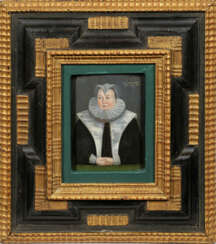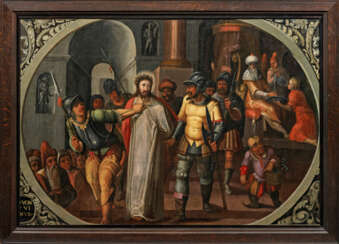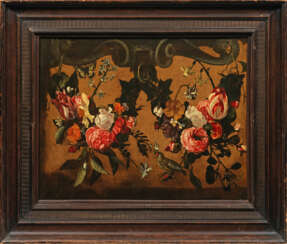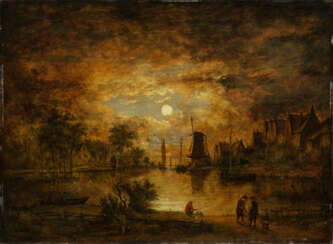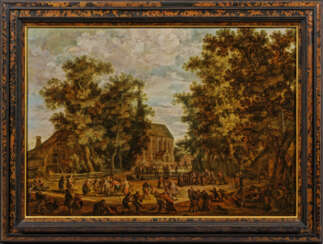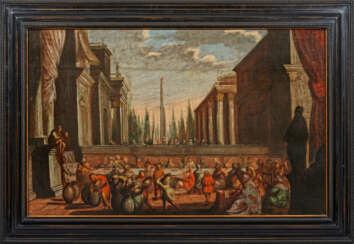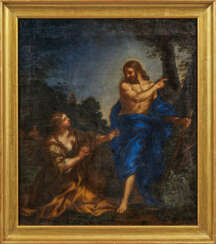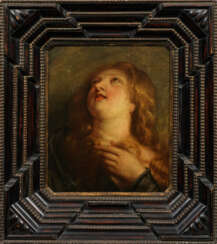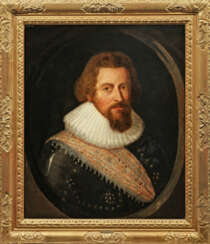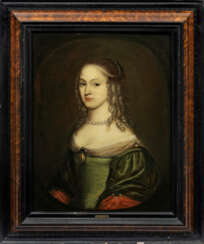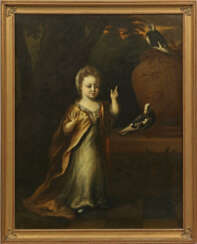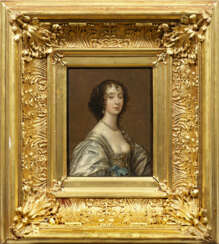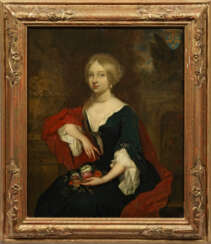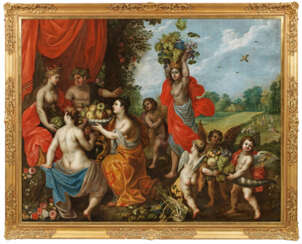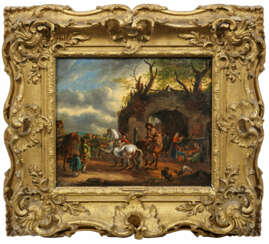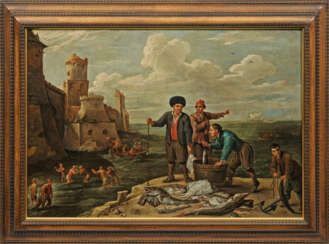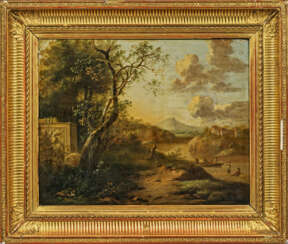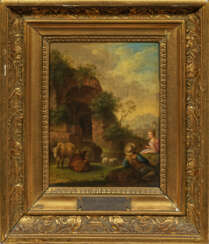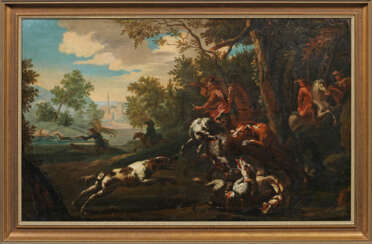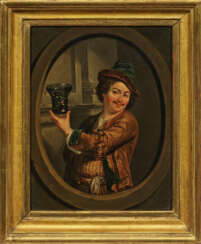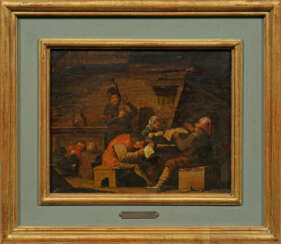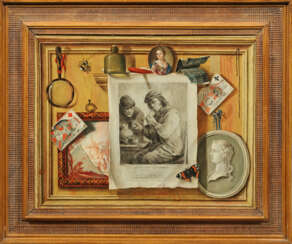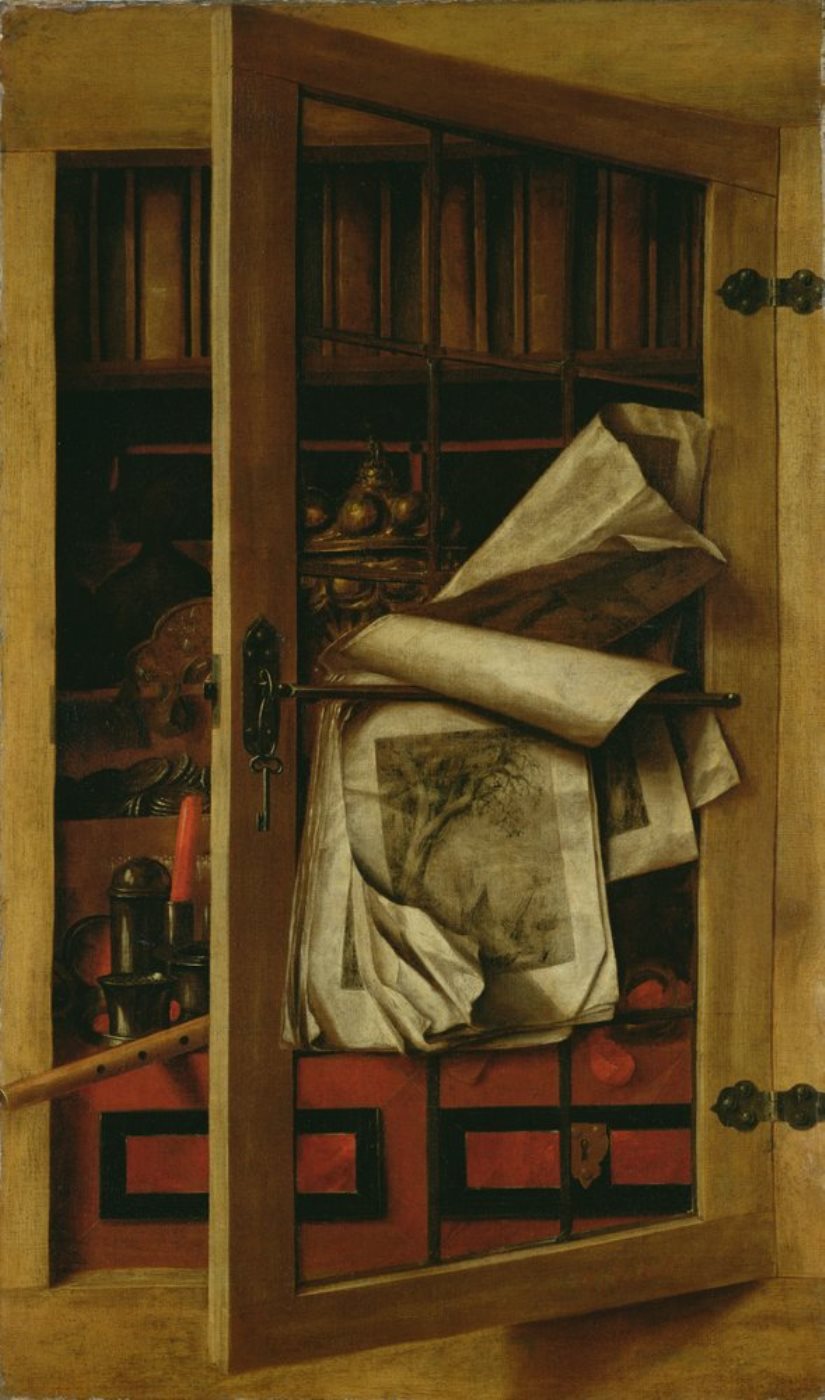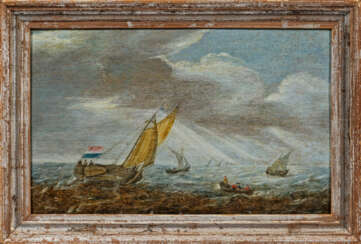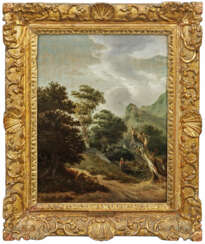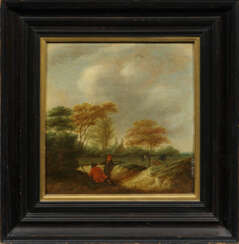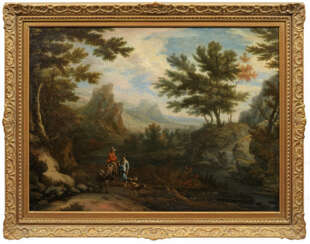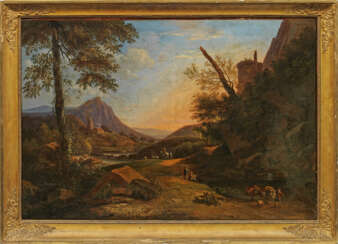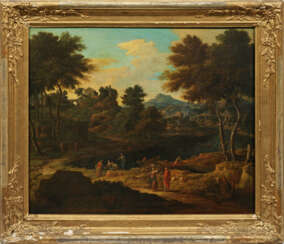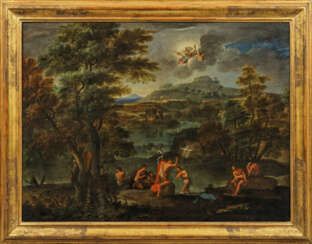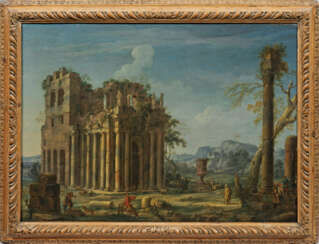
Paintings — 191. Kunstauktion Tag 2
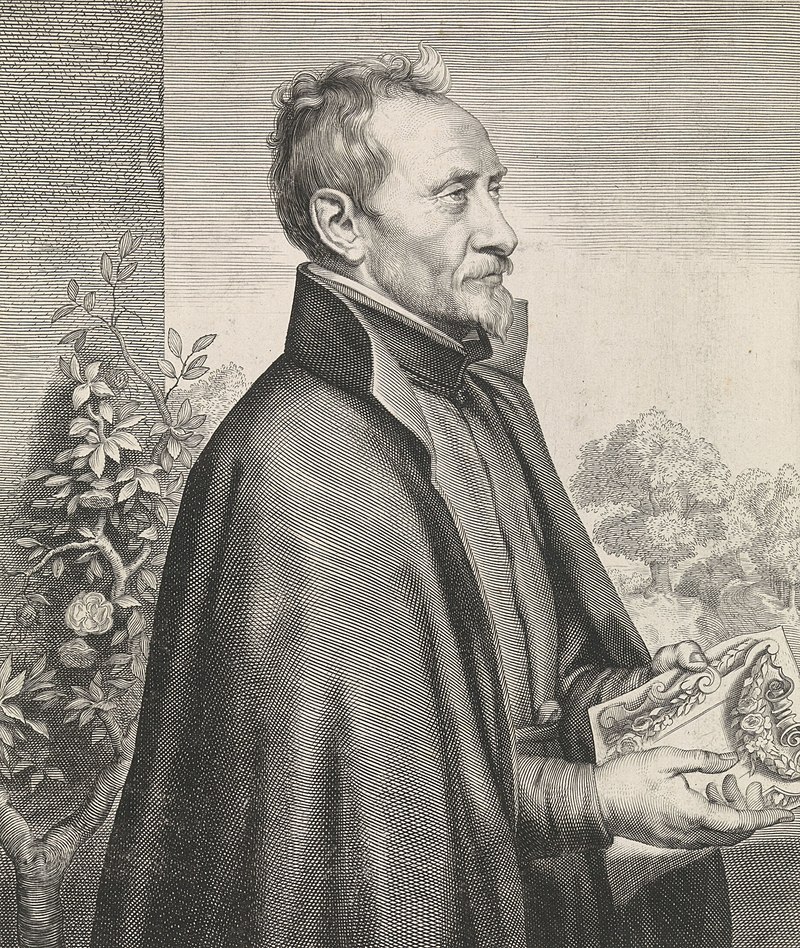
Daniël Seghers or Daniel Seghers was a Flemish Jesuit brother and painter who specialized in flower still lifes. He is particularly well known for his contributions to the genre of flower garland painting. His paintings were collected enthusiastically by aristocratic patrons and he had numerous followers and imitators.
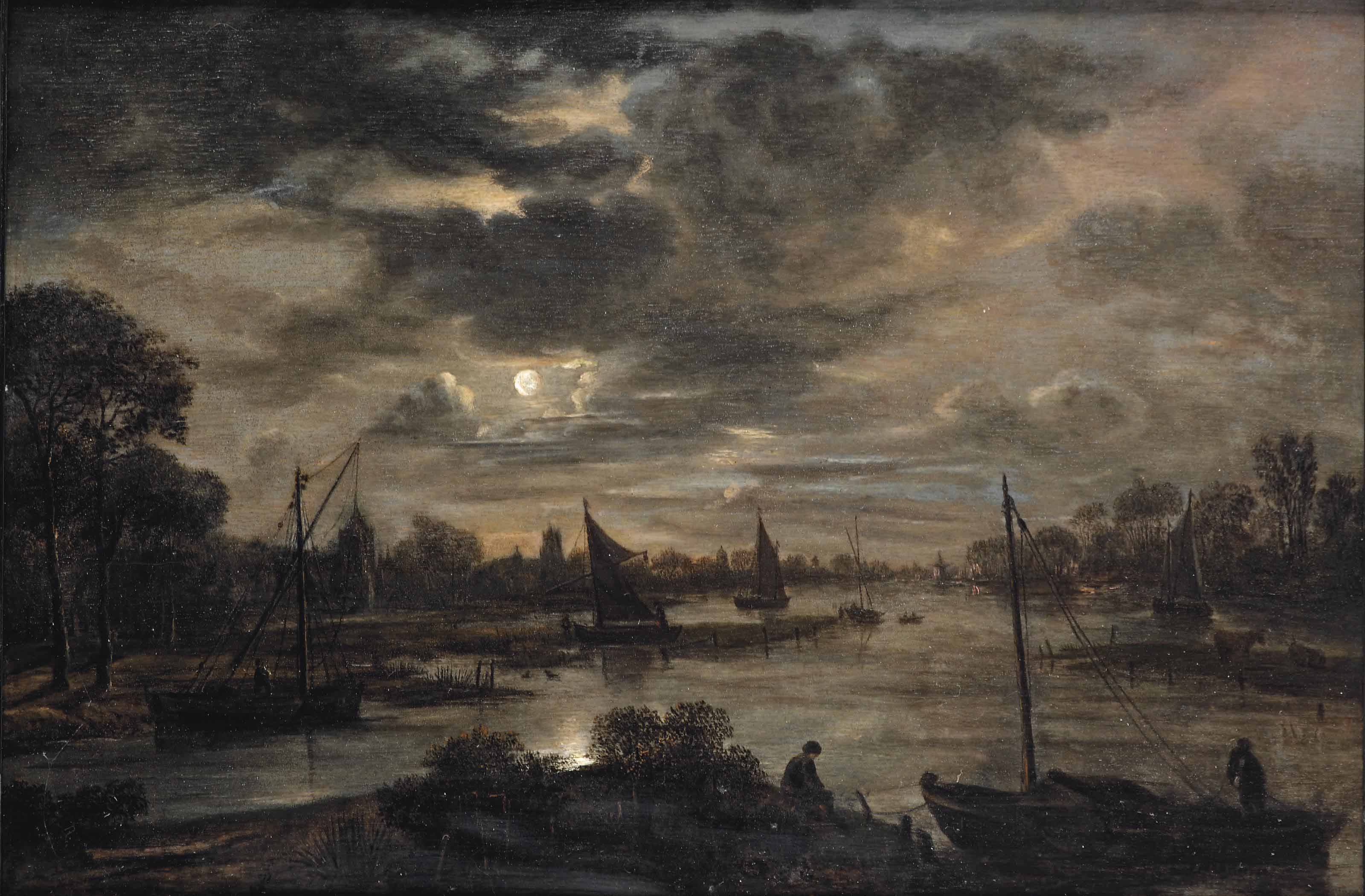
Aert van der Neer was a Dutch painter of the Gilded Age.
Van der Neer is considered a pioneer of the night landscape because of his successful solutions to lighting issues in his works. He painted many pictures of winter landscapes, including nighttime fires.
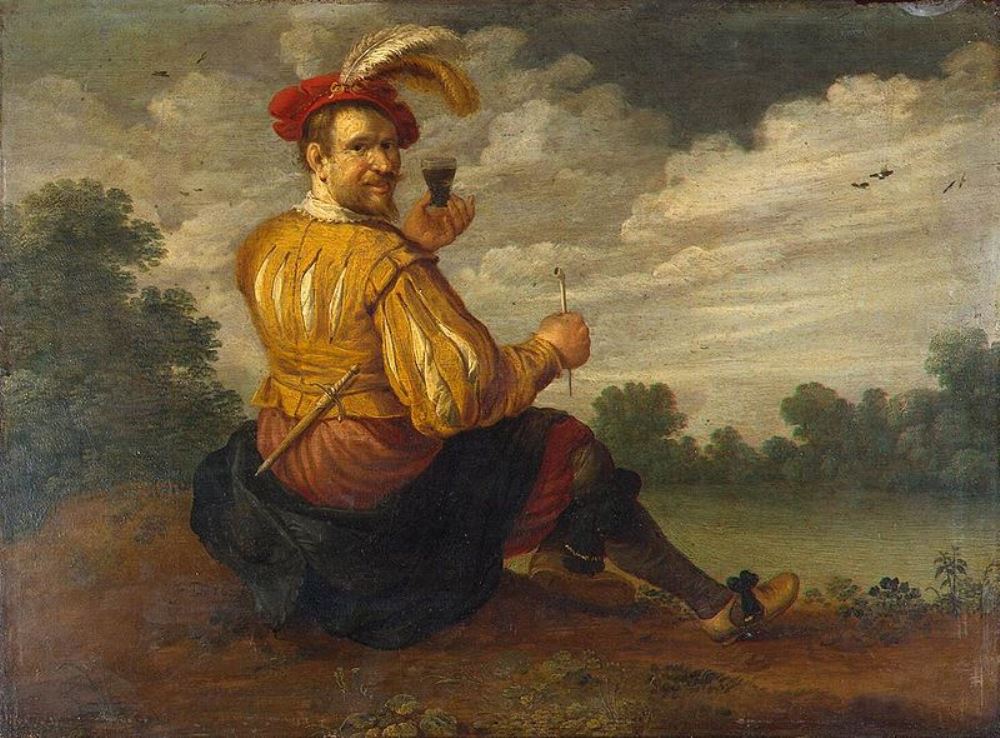
Joost Cornelisz. Droochsloot was a Dutch painter of the Dutch Golden Age, member of the Guild of St. Luke in Utrecht. He was a versatile painter, painting landscapes, moral allegories, and biblical stories. But he was mainly known for his genre rustic scenes with many participants, these paintings often had a moral component. In his compositions, Drochslot paid much attention to detail and signed them with the monogram "JCODS."
Pietro da Cortona, born as Pietro Berrettini, was an eminent figure in the Italian Baroque movement. His multi-faceted genius encompassed painting, architecture, and design, earning him a reputation second only to Bernini in the Roman Baroque style. Cortona's journey in art commenced in Rome around 1612, where his talents flourished under the patronage of influential families like the Barberini.
Pietro da Cortona's masterful frescoes in the church of S. Bibiana, commissioned by Urban VIII, set the tone for his illustrious career. His most iconic work, the colossal fresco "Allegory of Divine Providence and Barberini Power" in the Gran Salone of the Palazzo Barberini, epitomizes his skill in creating grandiose, illusionistic art. This piece, commenced in 1633 and completed in 1639, is a testament to his belief in the epic scale of history painting, a view he defended in a notable debate with Andrea Sacchi.
In 1637, Pietro da Cortona's artistic journey took him to Florence at the behest of Ferdinand II de' Medici, Grand Duke of Tuscany. Here, in the Palazzo Pitti, he created frescoes for the Planetary Rooms, combining allegorical themes with lush stucco work, significantly influencing the Italian and French decorative arts.
Pietro da Cortona's contributions to architecture were equally significant. His architectural masterpiece, the church of SS. Martina e Luca in Rome, exemplifies his ability to create grand structures with a unified Baroque vision. His architectural prowess, though less correlated with his painting style, made a lasting impact through its emphasis on form rather than ornament.
For art collectors and enthusiasts, Pietro da Cortona's works offer a rich tapestry of Baroque artistry, blending grandeur, realism, and allegory. His frescoes, paintings, and architectural designs continue to captivate audiences, symbolizing the opulence and dynamism of the Baroque era.
To stay updated on the latest insights and collections related to Pietro da Cortona, consider subscribing to our updates. Stay informed about new sales, exhibitions, and auction events related to this master of the Baroque style.

Anthony van Dyck, a Flemish painter born in 1599 in Antwerp and passed away in 1641 in London, is celebrated as one of the foremost Baroque painters of the 17th century. His notable contributions to the art world include his exceptional portraits of European aristocracy, as well as his religious and mythological paintings. Van Dyck's early exposure to art was influenced significantly by his apprenticeship with Hendrik van Balen and later, by the profound impact of working alongside Peter Paul Rubens. His mastery was recognized early on, leading him to set up his own workshop by the age of 15.
Van Dyck's journey to Italy in 1621 marked a pivotal phase in his career, allowing him to immerse himself in studying the Italian masters and commencing his successful stint as a portraitist. His style evolved under the influence of Titian, evident from his vibrant use of color and refined modeling of form. Van Dyck's Italian period not only honed his artistic skills but also established his reputation as a painter of consequence.
Upon returning to Antwerp, van Dyck's portraits became highly sought after, leading to commissions from notable figures such as Archduchess Isabella and Queen Mother Maria de' Medici. His role as a court painter further solidified in England under the patronage of King Charles I, where he was knighted and appointed as the principal painter, profoundly shaping the aristocratic character of Charles I's reign through his portraits.
Van Dyck's legacy extends beyond his death, having influenced English portrait painting for over a century. His innovative techniques in watercolour and etching, along with his sophisticated portrayal of subjects, continue to be admired. His art not only showcases his technical prowess but also reflects the cultural and social nuances of his era, making his work a significant study for collectors and art historians alike.
For enthusiasts eager to explore the intersections of art, history, and culture through the lens of Anthony van Dyck's work, staying informed about new discoveries and auction events is essential. Signing up for updates can provide exclusive insights into the world of one of the most influential figures in Flemish art. This subscription ensures that collectors and experts are well-informed of any developments related to van Dyck's oeuvre, enhancing their understanding and appreciation of his contributions to the art world.

Anthony van Dyck, a Flemish painter born in 1599 in Antwerp and passed away in 1641 in London, is celebrated as one of the foremost Baroque painters of the 17th century. His notable contributions to the art world include his exceptional portraits of European aristocracy, as well as his religious and mythological paintings. Van Dyck's early exposure to art was influenced significantly by his apprenticeship with Hendrik van Balen and later, by the profound impact of working alongside Peter Paul Rubens. His mastery was recognized early on, leading him to set up his own workshop by the age of 15.
Van Dyck's journey to Italy in 1621 marked a pivotal phase in his career, allowing him to immerse himself in studying the Italian masters and commencing his successful stint as a portraitist. His style evolved under the influence of Titian, evident from his vibrant use of color and refined modeling of form. Van Dyck's Italian period not only honed his artistic skills but also established his reputation as a painter of consequence.
Upon returning to Antwerp, van Dyck's portraits became highly sought after, leading to commissions from notable figures such as Archduchess Isabella and Queen Mother Maria de' Medici. His role as a court painter further solidified in England under the patronage of King Charles I, where he was knighted and appointed as the principal painter, profoundly shaping the aristocratic character of Charles I's reign through his portraits.
Van Dyck's legacy extends beyond his death, having influenced English portrait painting for over a century. His innovative techniques in watercolour and etching, along with his sophisticated portrayal of subjects, continue to be admired. His art not only showcases his technical prowess but also reflects the cultural and social nuances of his era, making his work a significant study for collectors and art historians alike.
For enthusiasts eager to explore the intersections of art, history, and culture through the lens of Anthony van Dyck's work, staying informed about new discoveries and auction events is essential. Signing up for updates can provide exclusive insights into the world of one of the most influential figures in Flemish art. This subscription ensures that collectors and experts are well-informed of any developments related to van Dyck's oeuvre, enhancing their understanding and appreciation of his contributions to the art world.
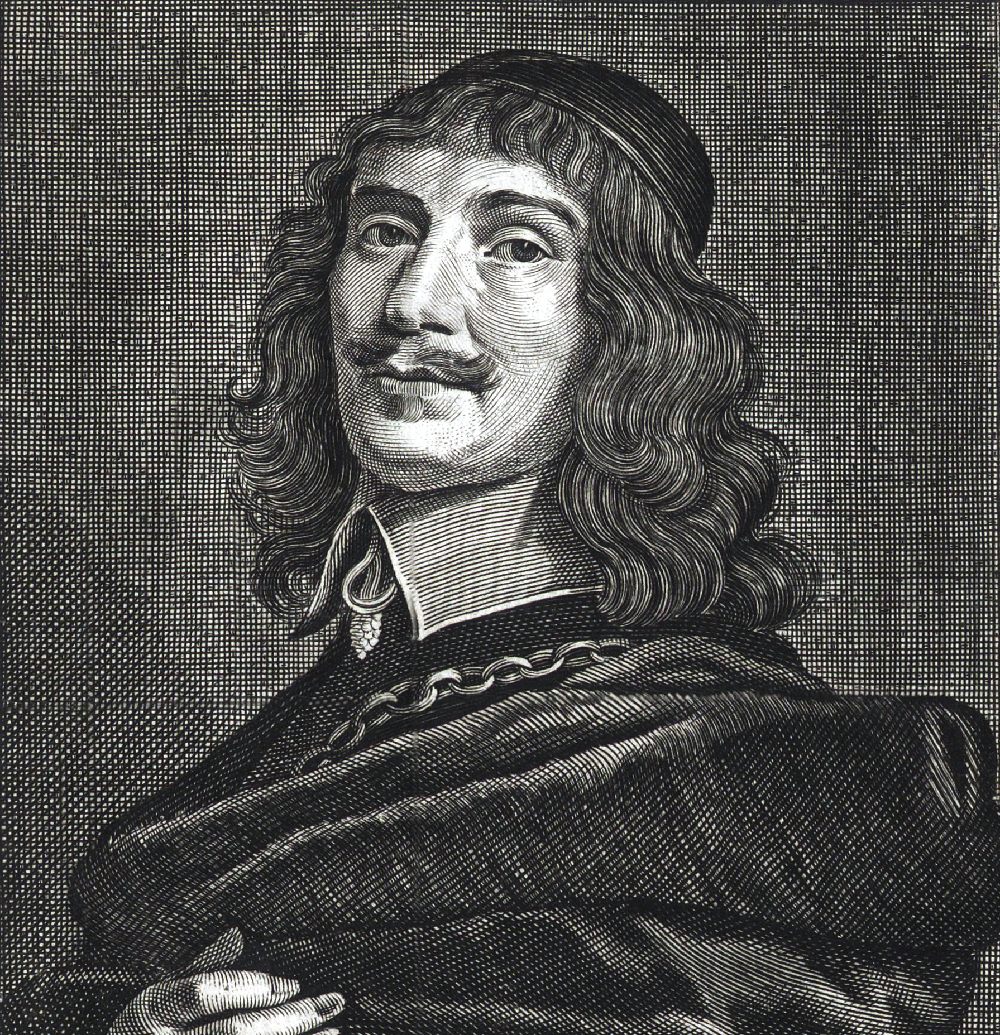
Gerard van Honthorst (Dutch: Gerrit van Honthorst) was a Dutch Golden Age painter who became known for his depiction of artificially lit scenes, eventually receiving the nickname Gherardo delle Notti ("Gerard of the Nights"). Early in his career he visited Rome, where he had great success painting in a style influenced by Caravaggio. Following his return to the Netherlands he became a leading portrait painter.
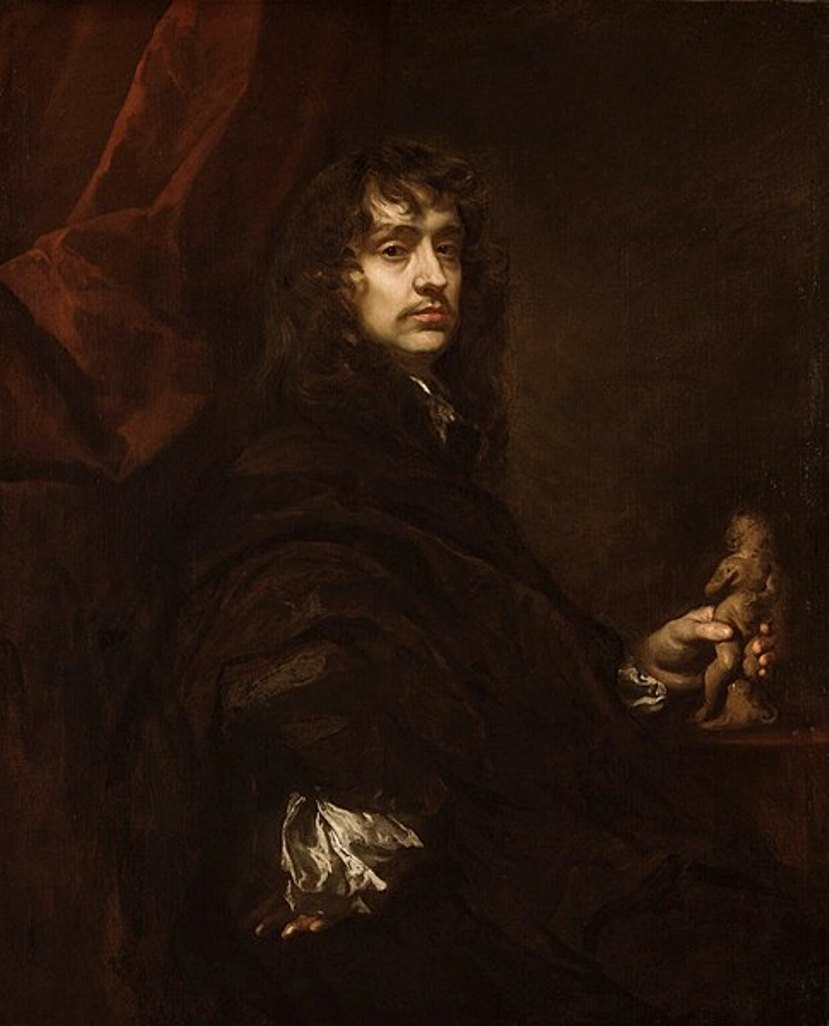
Peter Lely, née Pieter van der Faes, was an English painter of Dutch origin, a member of the Guild of St. Luke in Haarlem.
In England his talent as a portrait painter was very highly regarded, he became a British subject and was knighted. For many years Lely had the title of the most fashionable portrait painter in England. He was the chief portrait painter at the court of Kings Charles I and Charles II. Lely painted many portraits of noble knights and ladies of the court.
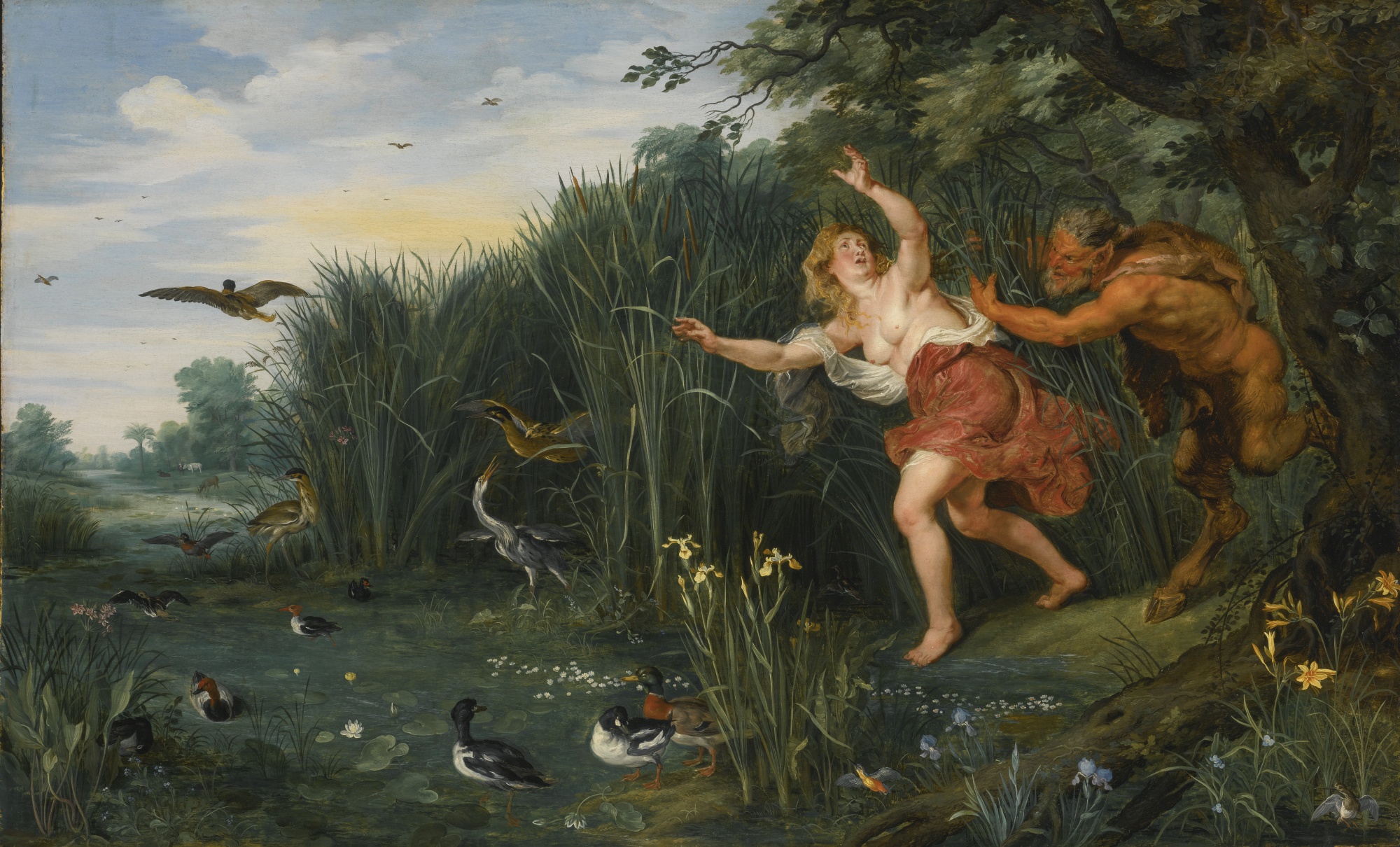
Jan Bruegel the Younger was a Flemish Baroque painter. He was the son of Jan Brueghel the Elder, and grandson of Pieter Bruegel the Elder, both prominent painters who contributed respectively to the development of Renaissance and Baroque painting in the Habsburg Netherlands. Taking over his father's workshop at an early age, he painted the same subjects as his father in a style which was similar to that of his father. He regularly collaborated with leading Flemish painters of his time.
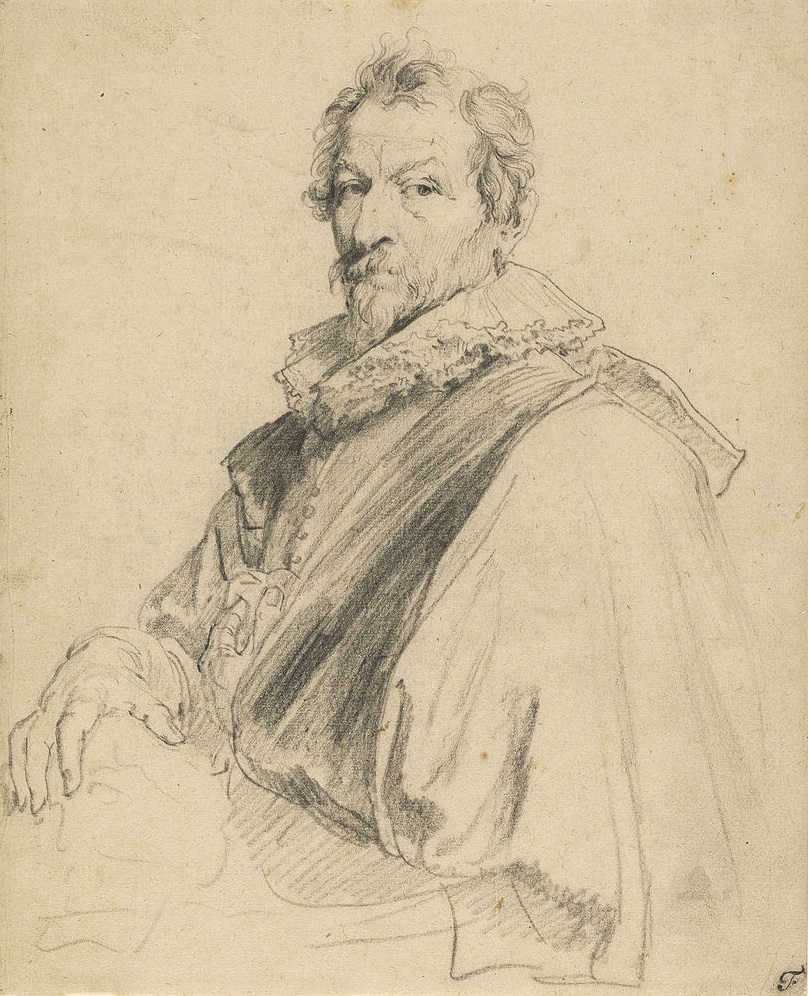
Hendrik van Balen the Elder was a Flemish Baroque painter and stained glass artist, member of the Guild of Saint Luke in Antwerp.
Hendrik van Balen specialized in small cabinet paintings, often painted on copperplate. The artist's work was inspired by mythological and allegorical as well as religious subjects. The artist played an important role in the renewal of Flemish painting at the beginning of the 17th century and was one of Antoni van Dyck's teachers.
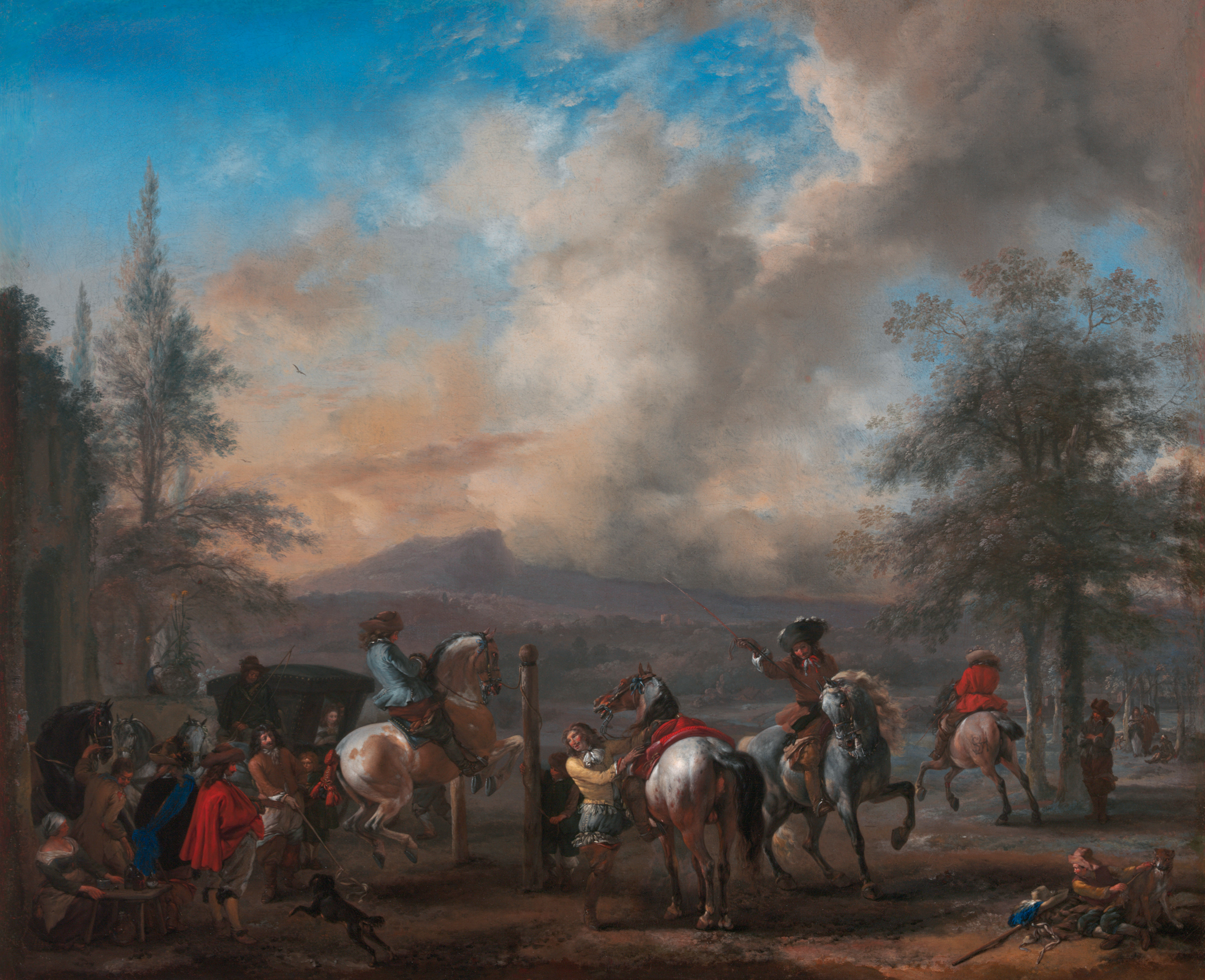
Philips Wouwerman was a distinguished Dutch painter. Renowned for his equestrian scenes, landscapes, and battle depictions, Wouwerman's work embodies the richness of the Dutch Golden Age of painting. He initially trained under his father, Paulus Wouwerman, and possibly with the celebrated artist Frans Hals, showcasing a deep engagement with the artistic milieu of Haarlem.
Wouwerman's career is marked by a prolific output, with about 570 of his works confidently attributed to him today. His oeuvre was once thought to include up to 1200 pieces, a testament to his influence and the extensive body of followers and imitators he inspired across Europe. His brothers, Jan and Pieter Wouwerman, were also painters who are sometimes confused with Philips due to their stylistic similarities.
Philips Wouwerman's paintings are celebrated for their dynamic composition and intricate detail, particularly his treatment of horses which has been a subject of admiration across centuries. His landscapes often feature Italianate settings, despite no concrete evidence suggesting he ever visited Italy. His style was notably influenced by Pieter van Laer, another Haarlem artist with a significant Italian experience, from whom Wouwerman might have acquired sketches and studies.
For art collectors and experts, Wouwerman's work provides a fascinating glimpse into 17th-century Dutch culture, offering scenes filled with vibrancy and life that capture the viewer's imagination. His paintings can be found in prestigious museums worldwide, including the Rijksmuseum in Amsterdam, The National Gallery in London, and the Kunsthistorisches Museum in Vienna, showcasing his widespread acclaim and the enduring legacy of his art.
For those interested in exploring the captivating world of Philips Wouwerman and staying informed about new discoveries, sales, and auction events related to his work, signing up for updates is highly recommended. This ensures access to the latest information and opportunities related to one of the Dutch Golden Age's most versatile and prolific artists.
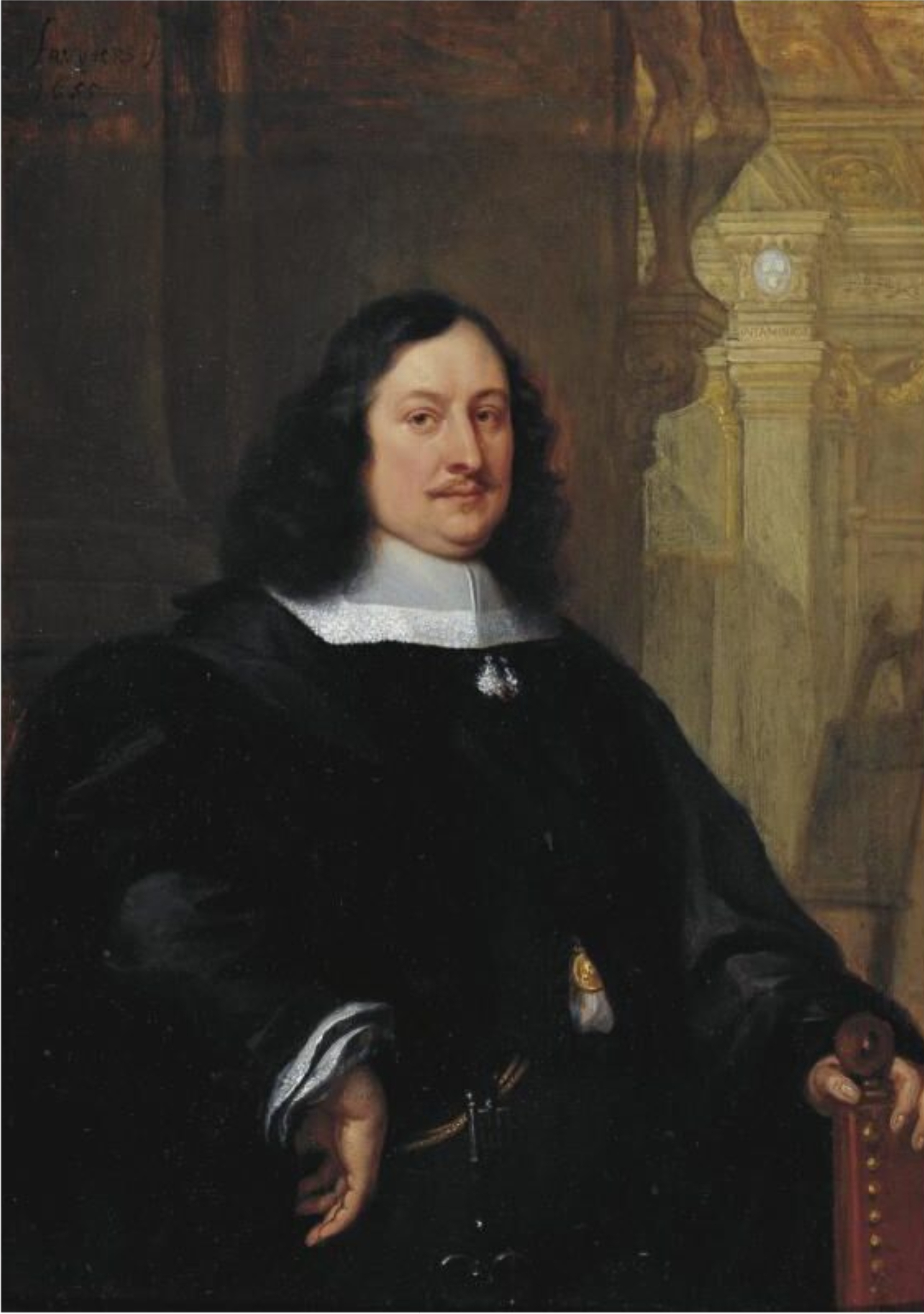
David Teniers the Younger was a Flemish Baroque painter, printmaker, draughtsman, miniaturist painter, staffage painter, copyist and art curator. He was an extremely versatile artist known for his prolific output. He was an innovator in a wide range of genres such as history painting, genre painting, landscape painting, portrait and still life. He is now best remembered as the leading Flemish genre painter of his day. Teniers is particularly known for developing the peasant genre, the tavern scene, pictures of collections and scenes with alchemists and physicians.
He was court painter and the curator of the collection of Archduke Leopold Wilhelm, the art-loving Governor General of the Habsburg Netherlands. He created a printed catalogue of the collections of the Archduke. He was the founder of the Antwerp Academy, where young artists were trained to draw and sculpt in the hope of reviving Flemish art after its decline following the death of the leading Flemish artists Rubens and Anthony van Dyck in the early 1640s. He influenced the next generation of Northern genre painters as well as French Rococo painters such as Antoine Watteau.
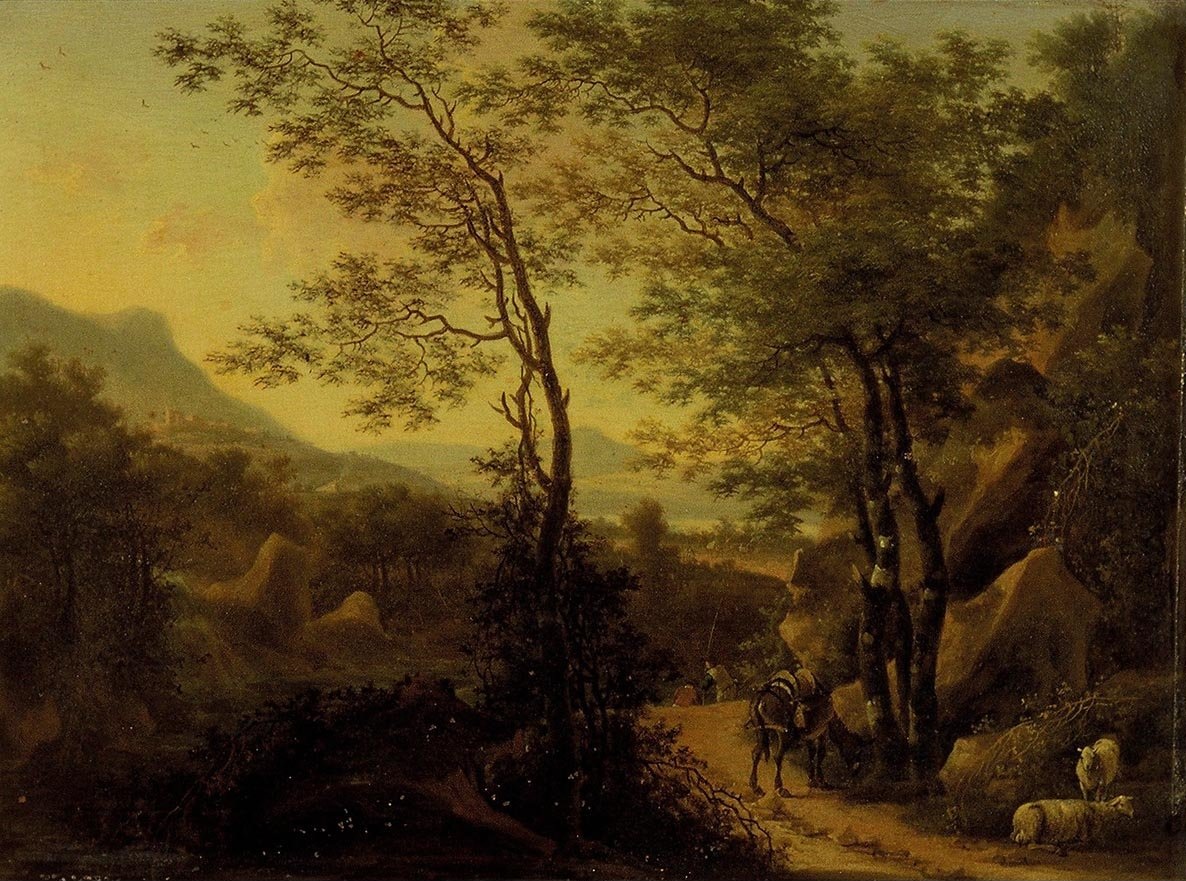
Willem de Heusch is a Dutch landscape painter and printmaker.
Willem de Heusch probably studied under Jan Both, as he later painted and etched entirely in his style. De Heusch signed his paintings with his full name beginning with a monogram.
Willem de Heusch was known for his realistic depictions of Dutch landscapes. He used a naturalistic style in his works that was characterized by his attention to detail and skilful use of light and shade.
Although Heusch's style is identical to Botha's, both masters may have been influenced by Claude Lorrain, whose Arcadian art they imitated, during their travels in Italy. Heusch sometimes sketched landscapes for the battle paintings of Jan Molenard.
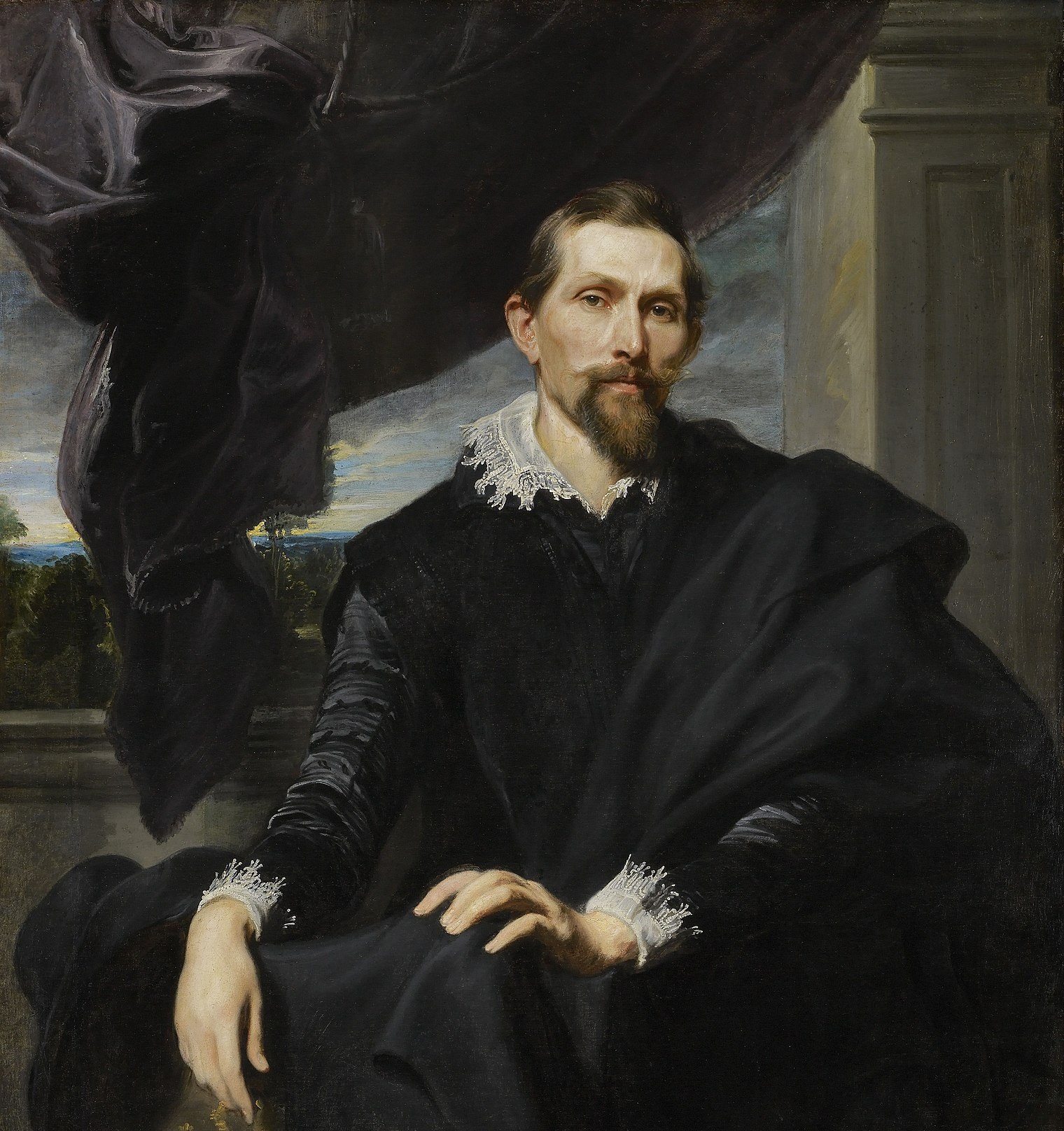
Frans Snyders was a Flemish painter of animals, hunting scenes, market scenes and still lifes. He was one of the earliest specialist animaliers and he is credited with initiating a wide variety of new still-life and animal subjects in Antwerp. He was a regular collaborator with leading Antwerp painters such as Peter Paul Rubens, Anthony van Dyck and Jacob Jordaens.
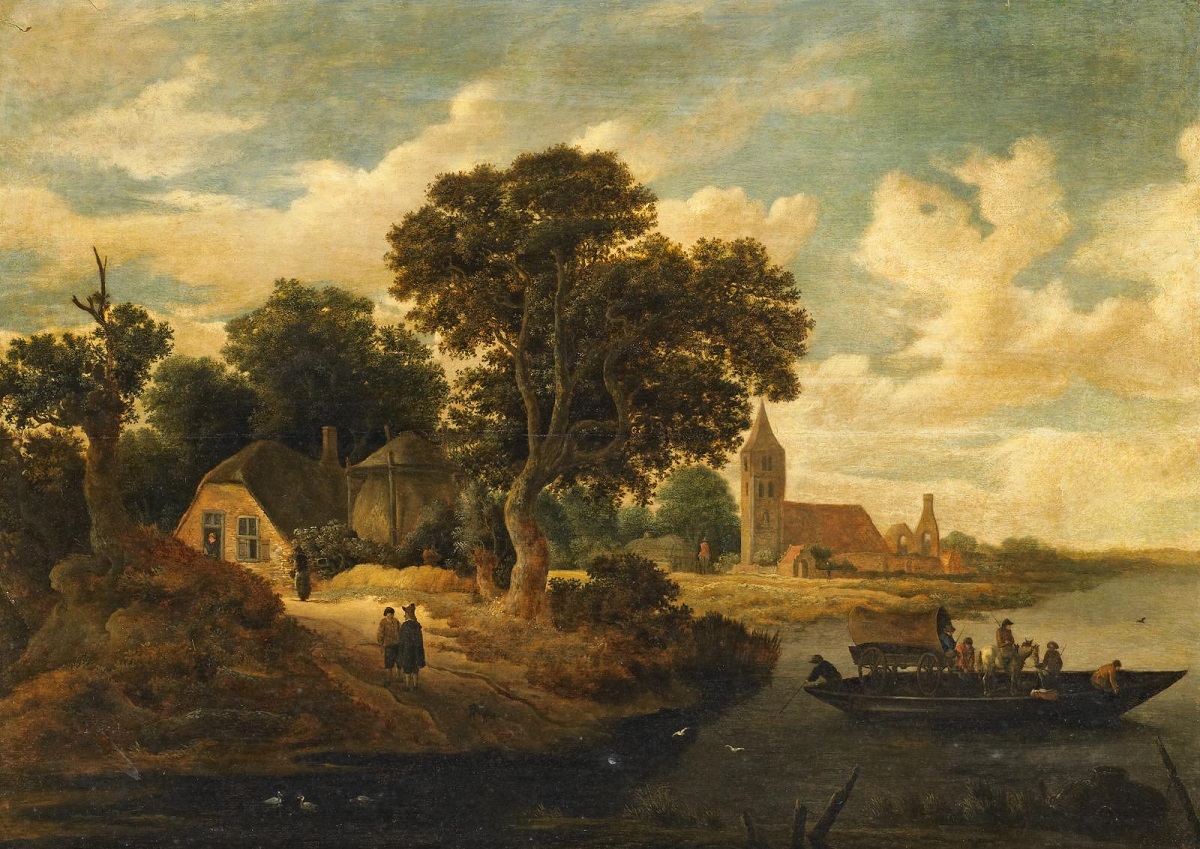
Roelof Jansz van Vries is a Dutch painter known for his landscapes.
Roelof Jansz van Vries was a member of the Harlem Guild of St Luke's from 1657. His work reflected the typical Dutch Golden Age style, characterised by meticulous attention to detail, atmospheric lighting, a sense of depth and realistic depictions of nature.
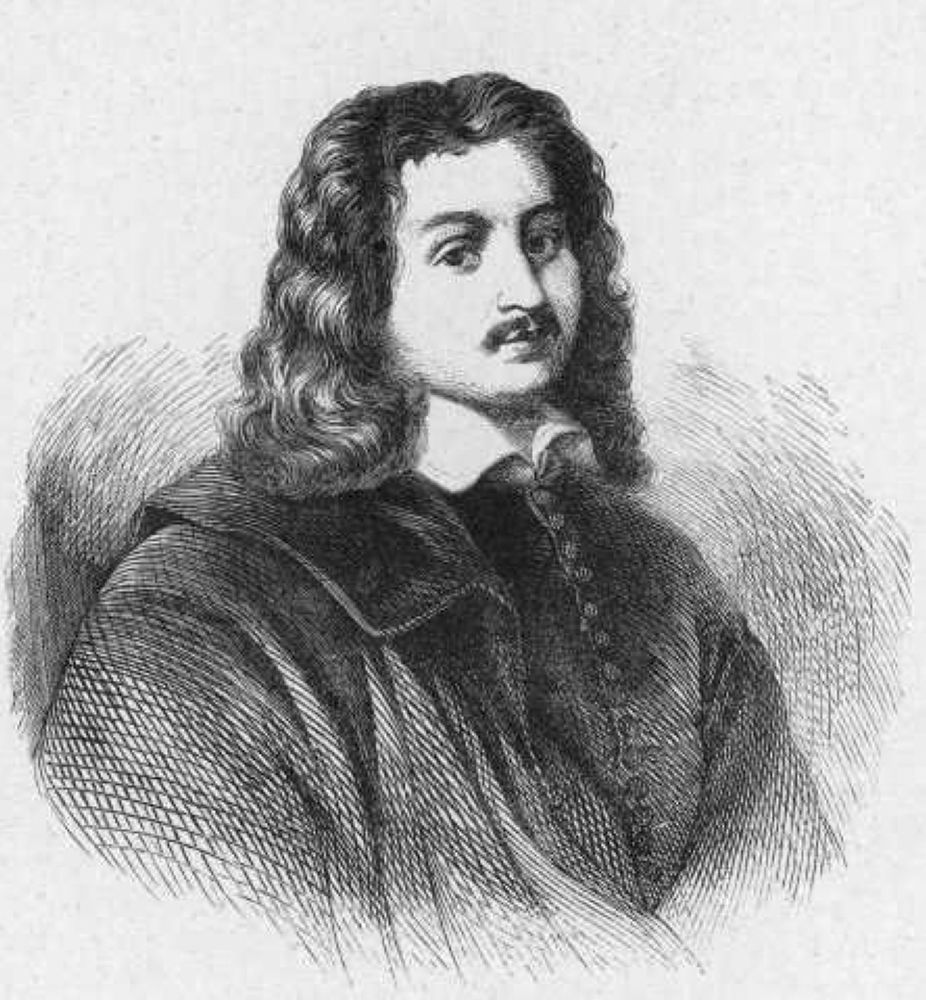
Nicolaes Pieterszoon Berchem was a highly esteemed and prolific Dutch Golden Age painter of pastoral landscapes, populated with mythological or biblical figures, but also of a number of allegories and genre pieces.
He was a member of the second generation of "Dutch Italianate landscape" painters. These were artists who travelled to Italy, or aspired to, in order to soak up the romanticism of the country, bringing home sketchbooks full of drawings of classical ruins and pastoral imagery. His paintings, of which he produced an immense number, (Hofstede de Groot claimed around 850, although many are misattributed), were in great demand, as were his 80 etchings and 500 drawings. His landscapes, painted in the Italian style of idealized rural scenes, with hills, mountains, cliffs and trees in a golden dawn are sought after. Berchem also painted inspired and attractive human and animal figures (staffage) in works of other artists, like Allaert van Everdingen, Jan Hackaert, Gerrit Dou, Meindert Hobbema and Willem Schellinks.
